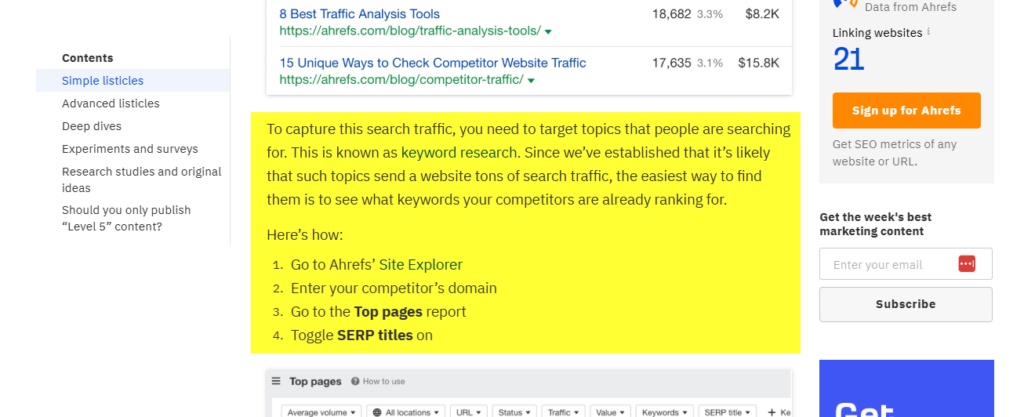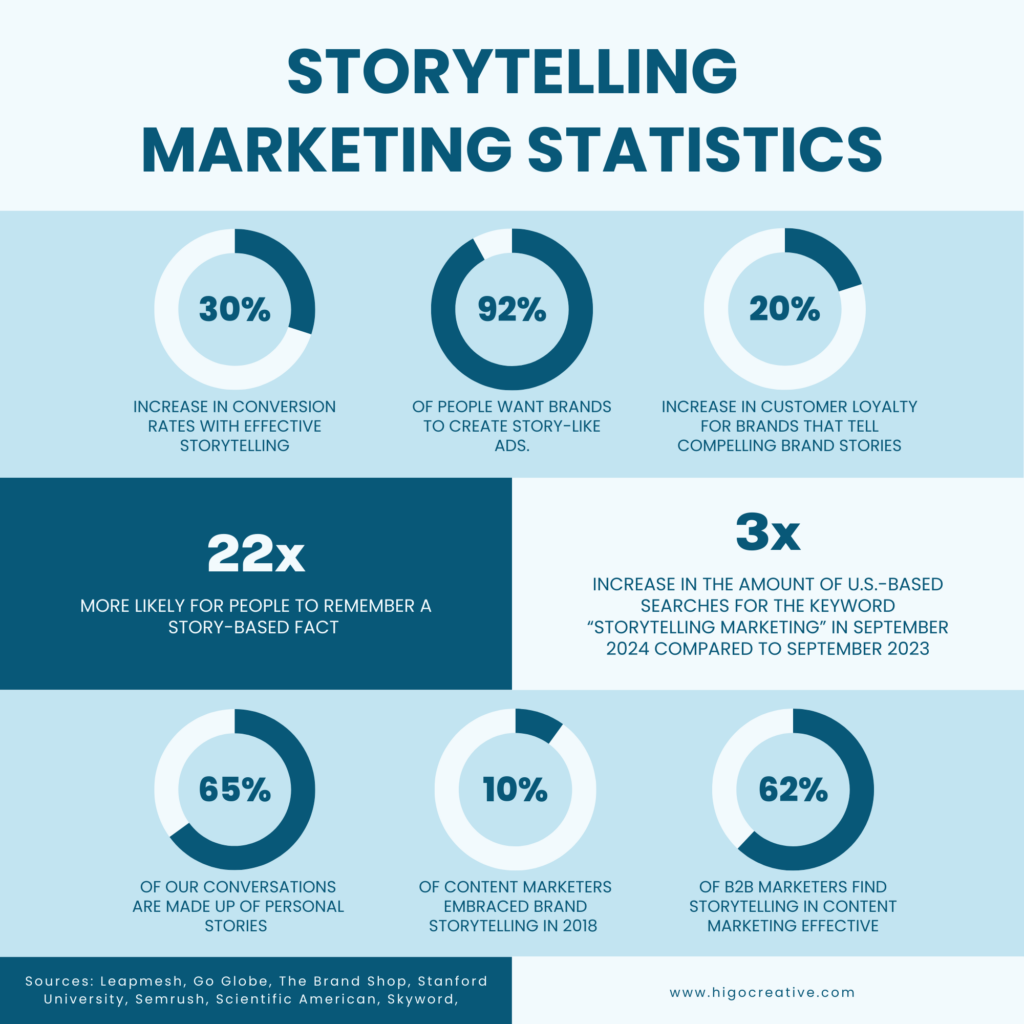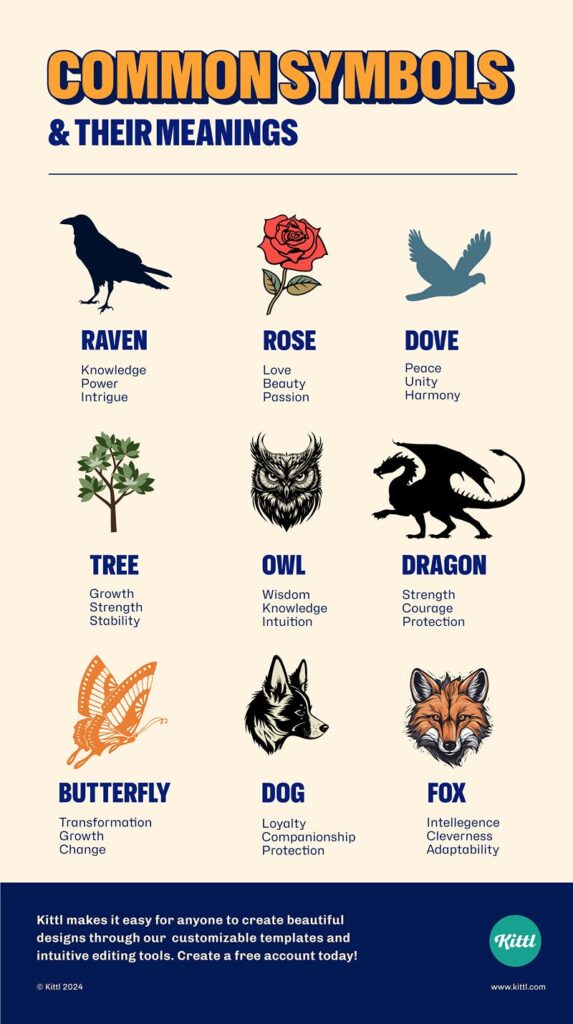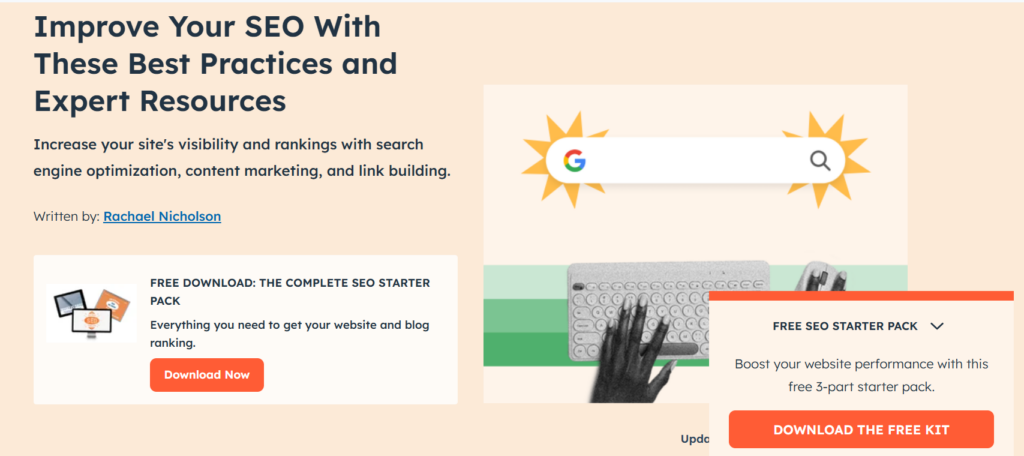Nobody likes ads, sales pages, and marketing content. People buy from you once they trust your brand. And this is why you should invest in silent marketing.
It is a marketing subset that relies on brand building, engagement, and long-term success.
How does it work and how can you get started with silent marketing?
Let’s find out in this detailed, step-by-step actionable guide.
What is Silent Marketing?
Silent marketing, also known as quiet or subtle marketing, is a form of marketing that focuses on storytelling and visual cues to communicate with the target audience subtly. The marketing message is quite understated. This makes it easy for the audience to connect with the message as it doesn’t look like blatant marketing.
What makes silent marketing stand out is that it is free from hype, artificial urgency, FOMO, manipulation, and aggressive techniques.
Here’s an example of silent marketing by Apple:

It promotes the MacBook subtly without any mention of its features, specs, or anything else. It focuses on realizing its audience about the importance of having a lightweight machine and how it’s different from its competitors – all in 3 words.
The MacBook image stands out. Its sleek design is all that they are promoting.
This is what quiet marketing is all about. Silently promoting your product and brand by building a lasting impression. The marketing collateral acts as a product instead of a source to persuade your audience.
Examples of silent marketing include:
- An all-visual display ad or social media ad with minimal or no copy
- Informative blog post without any mention of your product or brand
- Research-based social media content that doesn’t promote your product
- Informative webinar to help your target audience solve an issue without pitching your product
- Creative billboard ad without any copy or brand name.
Silent Marketing Benefits
So, what makes subtle marketing important for your business and why should you consider it (as opposed to traditional marketing)?
It comes down to the long-lasting benefits of silent marketing. It outperforms other forms of marketing massively when done right.
Here are the major benefits of quiet marketing:
Trustworthy
Data shows that up to 50% of people don’t trust ads. This is a reason why 1 in 3 internet users use ad blockers as they don’t want to see or interact with ads of any sort:

Advertisements and marketing campaigns, in general, aren’t trusted by consumers for a number of reasons including misinformation, manipulation, and extraordinary claims.
This is an area where silent marketing outperforms any other form of marketing and advertising. It is more trustworthy and credible.
Quiet marketing doesn’t focus on explicit marketing messages allowing you to build consumer trust by not being overly promotional.
High Engagement
Subtle marketing is exceptionally great at engaging your target audience. It relies on emotions rather than pitching product features. This lets you connect with your audience at an emotional level.
Dove’s Real Beauty challenge is a perfect example of how silent marketing drives engagement. Dove initiated this campaign back in 2004 (still running to this date) to celebrate diversity and fight skin and body type stereotypes.

Unilever didn’t promote its soap anywhere in the campaign yet it increased sales from $2.5 billion to $4 billion in the first decade of the campaign. Dove became Unilever’s best-selling product in the US.
Why?
Because the brand connected with its audience emotionally which resulted in massive engagement throughout the world.
Stands Out
Quiet marketing stands out from the crowd.
When you don’t focus explicitly on promoting your product and highlighting its features, your marketing campaigns instantly attract your audience.
Ahrefs uses silent marketing in its blog posts by covering different aspects of the software in a non-promotional and helpful way. Here’s an example:

They refer to product features in an educational way without asking readers to sign up for the app. Instead, Ahrefs focuses on helping readers by listing alternative ways as well and giving all the options to perform a task.
This is the reason you can see that this article has links from 21 websites. Some of their articles get links from hundreds of unique domains despite Ahrefs discussing its tool in the posts.
That’s how your marketing stands out when it’s subtle. Your audience doesn’t consider it as marketing and even if it is perceived as marketing, it doesn’t bother them. Because it’s not pushy.
High Brand Awareness and Recall
Subtle marketing increases brand awareness and brand recall.
People remember brands and products when they can relate to them emotionally. Silent marketing relies heavily on emotional connection. It has the ability to connect with the audience at a personal and emotional level.
Research shows that people feel connected to a brand when it discusses helpful and educational content instead of promotional content:

Silent marketing eventually leads to better connectedness with the consumers leading to an increase in brand awareness and recall.
Customer-Centric
Subtle marketing is, by default, customer-centric. This means your marketing collateral is focused on your customers, their needs, challenges, and desires – instead of your brand, product, and features.
This positively impacts your business across several channels including revenue, brand reputation, and product development:

Focusing on quiet marketing leads to customer centricity and that’s how you drive massive growth.
Silent Marketing Vs. Stealth Marketing Vs. Traditional Marketing
Quiet marketing is often confused with stealth marketing and most marketers consider them the same marketing strategies.
Silent marketing is different from stealth and traditional marketing at multiple levels.
Let’s find out what makes silent marketing different from the two.
Silent Marketing Vs. Stealth Marketing
Both subtle marketing and stealth marketing use similar approaches to interact with the audience with a focus on subtlety.
Quiet marketing focuses on creating a unique experience that’s calmer and less loud so that your audience feels connected to the campaign and brand.
Stealth marketing, on the other hand, relies on marketing techniques in a way that the target audience doesn’t know they are marketed to or exposed to (but in stealth mode) marketing.
A common example of stealth marketing is product placements and exposure in movies. For instance, Mini Coopers were used in the movie The Italian Job and the viewers don’t realize that they are exposed to explicit marketing:

While the objective in both subtle and stealth marketing is the same – to reach the target audience in a silent and non-intrusive way – the approach used is different.
Silent Marketing Vs. Traditional Marketing
The difference between silent and traditional marketing is quite evident.
At one extreme, silent marketing uses subtle techniques to promote a product or brand in a non-intrusive and engaging way. Traditional marketing (including digital marketing) uses bold and loud marketing approaches to reach and connect with the audience.
A typical example of traditional marketing is social ads that you see across all social media networks. You see ads in your news feed that promote products boldly.
Conventional marketing is more effective and has a wider reach as the message is direct and clear. Silent marketing is effective in the long run and might not deliver substantial results in the short run.
This is a reason why most businesses prefer traditional marketing over silent marketing.
Elements of Silent Marketing
There are certain characteristics of a silent marketing strategy that must be fulfilled to make it effective. These include:

- Understated messaging
- Emotional engagement
- Storytelling
- Symbolism
- Integration.
Let’s discuss these elements in detail and see what role each plays:
1. Understated Messaging
The basic element of quiet marketing is an understated message.
Understated messaging refers to suppressing your marketing message, product features, branding, and other promotional elements in marketing.
You need to focus on building a natural (emotional) connection with your audience without a clear, loud message.
Here’s an example of understated messaging by Ikea:

The ad doesn’t have any direct, loud marketing messaging. Even if you ignore the headline at the bottom and only look at the Ikea logo, you’ll get the message.
The image still makes sense without reading the headline.
There’s no right and wrong way to suppress messaging. You can go with a single word or a photo of your product or you can write a few lines that don’t sell your product directly.
The idea is: The marketing collateral shouldn’t have your message as the attention-grabbing source, rather it needs to be pushed in the background (or removed completely) and let the image, video, and visuals talk.
2. Emotional Engagement
A plain image with no meaning won’t help your brand. It should build an emotional connection with your ideal customers.
Your ad needs to evoke emotions and build a connection with the audience without selling the product.
Here’s an example by Nike:

The ad triggers the right emotions of cultural leadership without any mention of the brand itself.
You can trigger emotions in multiple ways:
- Using colors
- Sensory cues
- Storytelling
- Visual content
- Power words
- Brand values and philosophy.
Emotional engagement is a key silent marketing characteristic. You need to incorporate it in some way into your marketing campaigns to get the desired results.
3. Storytelling
Storytelling is another crucial element of silent marketing that helps you build an emotional connection with your audience. It helps you pitch your brand values and philosophy that shapes your brand image. Over time, people start associating your brand with certain values that you communicate through storytelling.
Here’s an example of how storytelling helps you connect with your audience:

You need to tell a story so that your audience can imagine themselves doing the same thing:

Storytelling is what consumers expect and love to see from brands. Research shows that up to 92% of people want businesses to create story-based ads and marketing campaigns:

It offers a lot and makes marketing much easier when done right.
4. Symbolism
Since you have to deliver the message silently to your audience, you have to rely on symbolism for effective silent marketing.
Symbolism in marketing refers to the effective use of colors, symbols, graphics, visuals, and icons to communicate with the audience. Symbols also help you shape the perception of your brand and products.
For instance, Whole Foods Market uses green color to communicate certain messages and ideas that people accept and relate to unintentionally. Green color is associated with health, nature, growth, freshness, etc.:

Here’s what common symbols mean and how to use them in marketing:

Choosing the right symbols for your silent marketing campaign helps you achieve goals easily. This is an absolute must because you don’t have a lot to say or write in quiet marketing campaigns so it’s imperative that you use symbols correctly to your benefit.
5. Integration
Silent marketing should integrate and align with content and your marketing strategy seamlessly. The idea is to make sure that your campaigns don’t appear as blatant advertisements (which is the opposite of quiet marketing).
This can be achieved by keeping things natural by integrating in content.
HubSpot does this so well. They have created highly specific lead magnets that they offer on every single blog post on their blog. The CTAs and lead magnets are so relevant to the content that readers consider them an essential part of the process and expansion of the blog post:

The silent marketing campaign is integrated perfectly into the content strategy and doesn’t seem intrusive.
This is a basic constituent of silent marketing. If your campaign doesn’t integrate naturally with the content, it will turn off your audience.
How to Get Started with Silent Marketing
Creating a silent marketing strategy for your business gets easier if you know what to do and in what sequence. Here’s how to get started from scratch:
1. Understand Your Ideal Customers
Silent marketing requires highly specific messaging. This means you need to have a clear understanding of who your ideal customers are, their challenges, what type of content they interact with, interests and hobbies, and demographics.
You need to create detailed, data-driven buyer personas (or use existing ones). Add as many details in buyer personas as possible. The more you know your customers, their behavior, demographics, and challenges – the better.
Here’s an example of a detailed buyer persona:

Ideally, the data in a buyer persona should be added via primary source. Collect data from your existing customers and update personas.
Then choose one persona to start with.
Silent marketing is tricky and requires a lot of testing. It is necessary to start with a highly targeted campaign targeting a single persona and see how it works.
You can transform high-performing campaigns into mass marketing campaigns.
2. Create Short and Long-Term Goals
Silent marketing is suitable for all types of goals and it works for both short and long-term objectives.
Generally, it is more suited for long-term strategic objectives instead of focusing on sales and conversions for a short period.
An example of a short-term silent marketing goal is to generate leads from blog posts by creating specific, informative, and high-quality lead magnets and linking to them naturally from content.
A long-term goal should be to boost brand awareness, brand recall, and brand image with a focus on being a climate-friendly business.
Use the SMART goal framework to develop objectives. Here’s how SMART goal technique works:

The silent marketing goal must integrate with your brand’s marketing strategy and business strategy. It can’t work in isolation.
What this means is that a certain portion of your overall marketing budget (say 20%) should go into silent marketing and remaining on other marketing campaigns.
It’s not a great idea to rely solely on quiet marketing as it needs a lot of time to show results. You need other marketing campaigns to generate sales to keep your business running.
3. Have the Right Team and Resources
Subtle marketing requires specific resources that you usually don’t need for traditional marketing.
Here’s a list of must-have resources required for silent marketing:
- A dedicated marketing team with at least one silent marketing expert
- Tools and apps such as design tool
- Budget and in-house resources.
Silent marketing requires a deep understanding of psychology, design, symbolism, and user experience. You need to allocate the right people for the job – which is often a challenge.
You need highly creative individuals who can think out of the box and come up with visuals that can speak. On top of that, you need to track your campaigns at a granular level.
For instance, you need to track cursor movement, scroll depth, and session recordings to analyze how your audience interacts with the content.
If you don’t have these resources or if you fail to provide additional resources to your marketing team, silent marketing won’t work as expected.
4. Choose Marketing Channels
Once you have the team and resources in place, it’s time to choose the marketing platforms for your silent marketing strategy.
Subtle marketing works for all types of channels and touchpoints including:
- Blog in the form of content marketing where you publish high quality, informative content for your audience
- Social media platforms where you publish non-promotional, informative content with your followers
- Display ads to connect and engage with your ideal customers through interactive visuals
- Video content that focuses on problem-solving without any mention of your product or brand.
You don’t have to choose and target all these channels. Start with one and move from there.
For instance, choose your website and blog as the primary channel. Create and publish high quality content without referring to your product or brand. Do it consistently for months (and years) and you’ll see an uplift in brand awareness, organic traffic, conversions, sales, and revenue.
HubSpot is a perfect example. It consistently publishes high quality, non-promotional content on marketing and sales. It has been doing it for years. If you look at any post, it never promotes or talks about any of its products.
It offers highly informative content to its readers.
Choose any post and you won’t see any link to any of their products or offers except lead magnet. It’s the best way to do silent marketing.
You don’t have to necessarily choose your blog as the primary channel. You can pick any as long as it aligns with your goals and marketing strategy.
5. Experiment
Once your silent marketing campaigns go live, you need to run A/B tests to improve performance.
Experimentation helps you figure out what works and why it works so you can replicate it at scale.

For instance, you run a display campaign with an image of your product without any text. The ad has a certain meaning and it’ll be perceived by your audience in a certain way. You need to figure out if it is sending the right signals and delivering the right message that you want it to deliver.
In simple words, the perceived perception of your brand should match your expectations (actual perception).
This type of advanced behavioral and qualitative tracking isn’t simple, unfortunately.
A/B testing is one way to figure out what’s working but it might not explain why it’s working. You’ll need behavioral analytics tools and feedback from customers to improve and optimize content.
Final Words
Silent marketing isn’t difficult. It just requires extra patience and commitment.
Unlike traditional marketing, such as PPC or an influencer marketing campaign, which delivers results instantly with little investment in marketing collateral, quiet marketing needs time and extra effort that goes into developing quality creatives and content.
What you should do is ensure that silent marketing works with conventional marketing.
At one extreme, you invest in silent marketing for a positive brand image and sustainable growth. At the other end of the spectrum, you need to use traditional marketing to generate instant sales and revenue to maintain a healthy cash flow.
We have already discussed this in detail in this blog post that explains how to maintain the balance between two different types of marketing approaches.
Apply the same technique to silent marketing.
Get started with it today.
It’s simple.
Follow the steps in this guide.
Featured Image: Pexels



